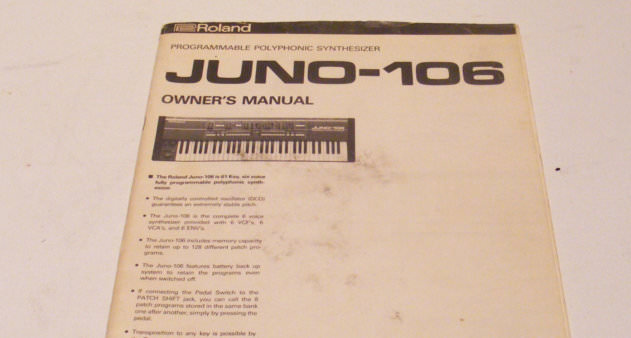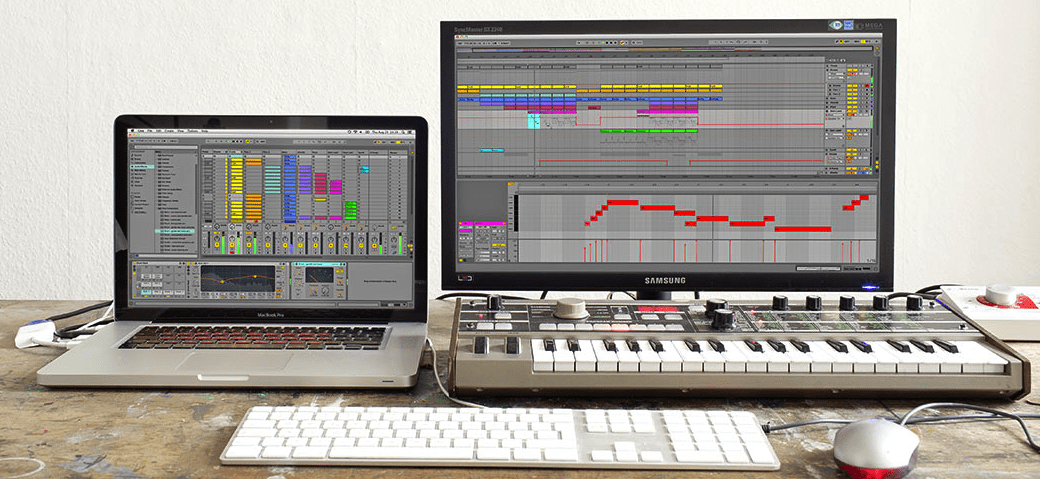Read the Manual!

As musicians and producers we like to think of ourselves as intuitive artistic types – which means that we couldn’t possibly lower ourselves to actually reading the manual. Of course, some manuals can be painful to read at best, but the reality is that there are often features we overlook in the first flush of love for our new toy. Yes, synths and drum machines should be considered creative instruments, but they’re also complex technical tools. There’s no shame in admitting that you need to read the instructions to understand how they work.
synths and drum machines should be considered creative instruments, but they're also complex technical tools.
Exactly the same applies to software. Do you really know what all those different modes in your compressor plugin do? What’s that ‘soft clip’ button for? What the hell are all those weird parameters in your reverb plugin? Adaptive Q in your EQ? Before you scratch your head and reach for the presets, just RTFM!
There are two great advantages to learning your software and hardware inside out. The first is that it makes it easier to work with the features you already know about. In that sense it’s all about making it quicker and easier to get the results you’re looking for.
The second is that with more complex tools you’ll also discover features you didn’t know existed, which could unlock new creative avenues to explore.
I've used the Juno-106 since forever. Today I AcCIDentally pressed "Poly 1" and "Poly 2" at the same time – voilà, there's the unison mode!
— tilliander (@tilliander) April 16, 2014
The flip side to this is that, especially with a modern DAW, there are multiple ways of achieving the same result, and some functions that you may never need to use. However, every so often you’ll come across one small feature that can entirely change your workflow – which makes a little reading worthwhile. It’s all about learning to use your tools, figuring out what they can do and streamlining the technical side of your production process to put the focus back on the creative parts which really matter.

07.59 PM
Thanks a lot for this very usefull article.
08.59 PM
Great article : one doesn’t need lots of stuff to achieve great ideas.
Always focus on the ideas, not on the gear.
I would also add that a few cheap tricks can strongly improve your listening accoustics. Read SoundOnSound articles in their archives on that matter (Studio SOS). I lost so many many years working in poor acoustics. Now that I solved this problem is like if I had a new pair of expensive speakers.
09.16 PM
On a 24bit system, you have to have your master at -72db to mix at 12bit, I frankly doubt anyone mix at those levels.
11.14 PM
finally someone’s addressed the reality of the situation. some much needed pragmatic advice
12.29 PM
Nice article that addresses many things that I have stumbled on. Such as when I adjusted my seat to my keyboards high enough caused me legs to hurt above and behind the knees because my feet didn’t touch the floor well enough. The solution was to lower the keyboard stand.
Few hints and my learning experience:
The modern computer master volume is outside the bit domain of the soundcard. and won’t cause degradion Use that if you have nothing else. Even the most basic built in audio chipset is at least 24 bit nowadays anyway.
The german Beat magazine has several free plugins that are excellent.
drumMic’a is a good free drum plugin.
I spent around 9 days in selecting a DAW few years ago. A one called Energy XT was by far the easiest to learn in my opinion. but deceptively powerful. The drawback is that the looks are dated and until recently not in much development.
I own now couple of other DAWS, but it is still my favorite.
Cakewalk has often excellent sales on their synths and their entry level DAWs at great discounts.
Isotope Nectar Elements is often on sale and powerful and easy to use plugin for voice.
Today I mainly use 3 commercial synths. The reason is that I invested time in studying them (as this artivce recommends and found that I could do virtually anything that I need). One is sample based, one a hybrid and the third is analog.
I found out I was spending to much time in checking out free synths. Don’t do the same, select rather few and stick to them.
I use mostly free effects or the ones that come with my DAW’s, (apart from Nectar Elements). I find it sufficient and think it will suffice most people (non pros).
I found creating a whole song a bit overwhelming. By sticking to smaller pieces but doing them well increased my confidence.
My other weak point was lack of experience with drums. Using and studying midi drum clips and modifying them rather then creating new beats, helped a lot in the beginning.
Also realizing that I spent too much time in tweaking sound of the beat in the beginning as I had wrong ideas of how it would sound in the final mix.
02.48 PM
Yup – even though on a 24bit system, using only 12-bits is theoretically down at -72db and Javier Z mentions that people don’t mix at that level, you’d be surprised at the way some people set their gain structure in a DAW – especially when using buses/groups, and then use the DAW’s output level as an overall monitoring volume control.
So 12-bits isn’t necessarily common, but i’ve seen it.
12.21 PM
Speaker placement:
” NOT TOO NEAR THE REAR WALL, ”
Well, Genelec recommends to keep the speakers either on the back wall or over 1 meter from the backwall. Backwall being as good as one meter. For most homestudios it’s better to have speakers on the backwall for most controll over the sound.